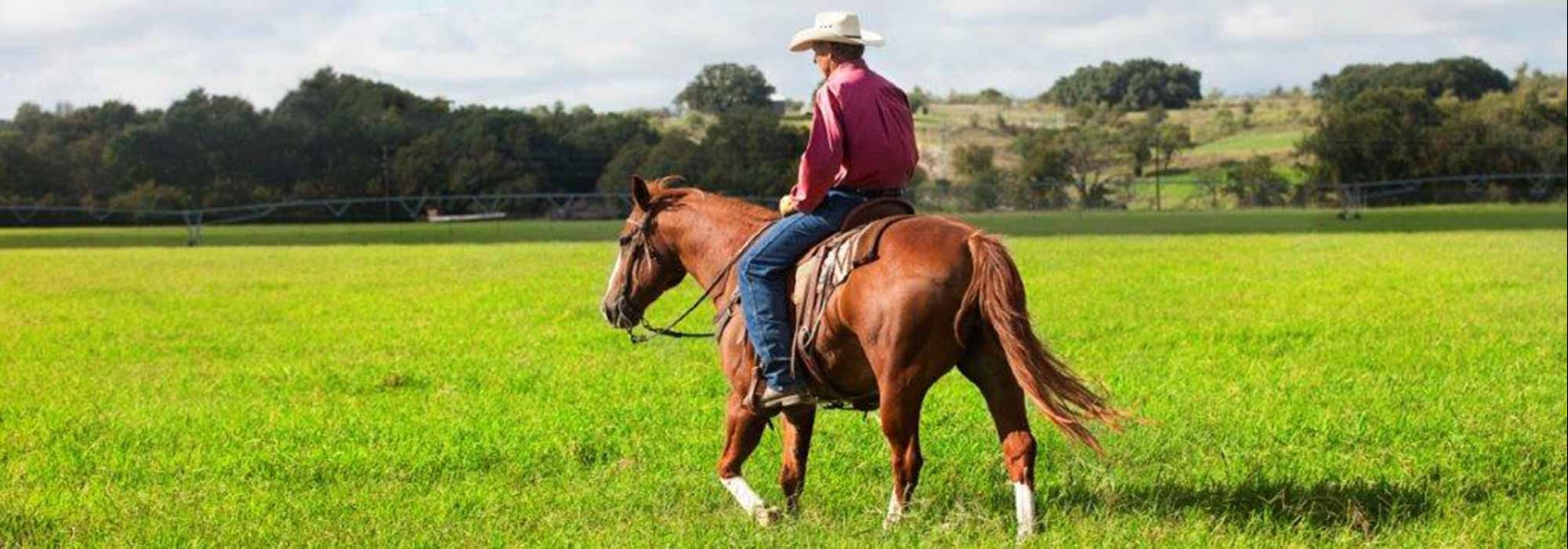On the Road Again
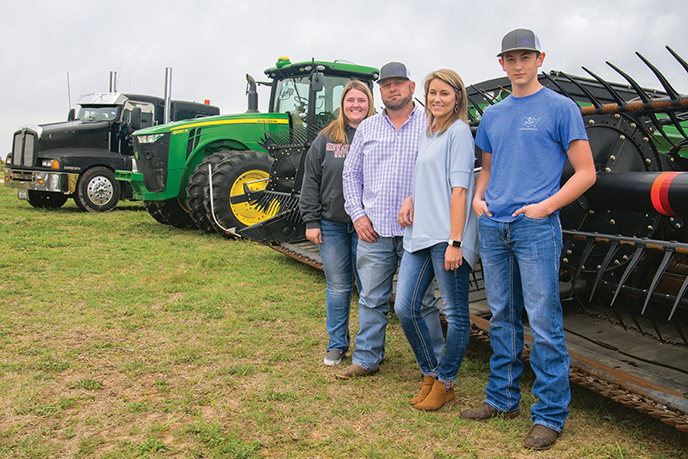
Custom harvesting is a family affair for the Gregorys, from left to right: Hadley, Jeff, Shana, and Hayden. Photo by: Sheryl Smith-Rodgers
Hail, tornadoes and dust storms don’t faze Jeff Gregory, the owner of 4G Harvesting and Trucking based in Early, Texas. As a custom harvester, he and his crew often deal with iffy weather and other challenges as they crisscross the Midwest, cutting crops for most of the year.
“What we do is no different from farming,” says Jeff, who runs the business with his wife, Shana. “But instead of putting all our money in a crop, we put our money in someone else’s, which means our work has a lot of risks. For instance, we may show up to cut, and then have to leave the next morning because hail took out the crops. The farmer has insurance for his loss, but we don’t.”
As a third-generation farmer, Jeff understands both the risks and rewards of the business.
“I grew up on a peanut farm,” he says. “My family always had a combine, and we’d cut crops for other farmers. So I always wanted to start my own business.”
Financing the Equipment
Jeff started the business in 2013 and began partnering with Central Texas Farm Credit in 2017 to help finance his operating expenses and equipment purchases.
“We’ve built 4G Harvesting and Trucking from the ground up,” he says. “Nothing has been given to us. But I couldn’t have done it without Farm Credit’s help. They know about the ag world and have reasonable interest rates. We also have an operating line of credit with Farm Credit, which allows us to keep the wheels running.”
As a custom harvester, Jeff is on the road for nine months of the year. Traveling caravan-style, he and his three hired hands — four during busy times — haul two combines, two tractors, one grain cart, two hopper bottoms and two headers. They also take two RV trailers.
Using Google Earth, he researches routes to ensure the machinery can safely fit highways and pass under bridges. Many states require permits, which must be obtained ahead of time.
Harvesting From April to December
The season starts in late April in South Texas, where the crew cuts and trucks wheat to coastal ports. In May, they harvest the Gregorys’ own wheat crop near Early. Then everyone heads north into Oklahoma, Colorado, Kansas and Montana, cutting crops as they ripen. Each job runs roughly 10 to 14 days. When the work’s done, they pack up and move again.
“We cut every crop that can be put through a combine,” Jeff says. “Wheat, oats, soybeans, sunflowers, milo, peas, sesame seeds, guar and chickpeas. Even lentils in Montana.”
The majority of 4G’s customers are large, family-owned farms, he says, explaining the need for custom harvesters.
“Combines cost $500,000, and headers start at $100,000. So it’s cheaper for farmers to hire us than buy the machinery, use it for two weeks and then park it in a barn,” he says. “We also haul their crops to nearby grain elevators or terminals. We do it all.”
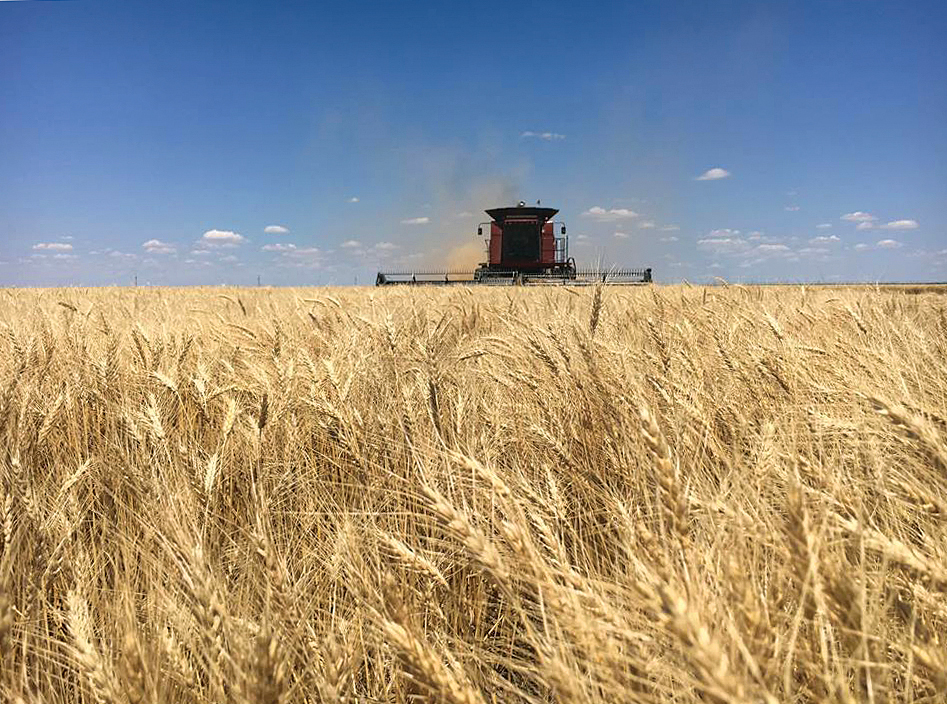
Scenic views greet Jeff Gregory as he combines wheat across the country. Photos courtesy of the Gregory family
Traveling as a Family
When schedules allow, Shana, who works as a school nurse, and their teenage children, Hadley, 18, and Hayden, 16, join Jeff on weekends during the school year. In years past, all three worked alongside him in the summer.
Hayden, who willingly traded high school sports for farming, drives a grain cart. He plans to join the family business full time after high school. Hadley will start college in August.
“Hadley created a spreadsheet for us that breaks down our customers’ loads, yields and bushels,” Jeff says. “When we’re done cutting, everything’s computerized. We charge by the bushel, so we can print out an invoice right away. Farmers can take their documents straight to the FSA office and turn in their yields.”
Such tech-savviness ranks high with Jeff.
“We offer the latest in technology to our customers,” he says. “Our top-of-the-line combines use GPS and auto-steering. Our grain carts have built-in scales, so crops can be weighed in the field. We can also produce color-coded yield maps of fields, which farmers can use to determine fertilizers and seed for the next season.”
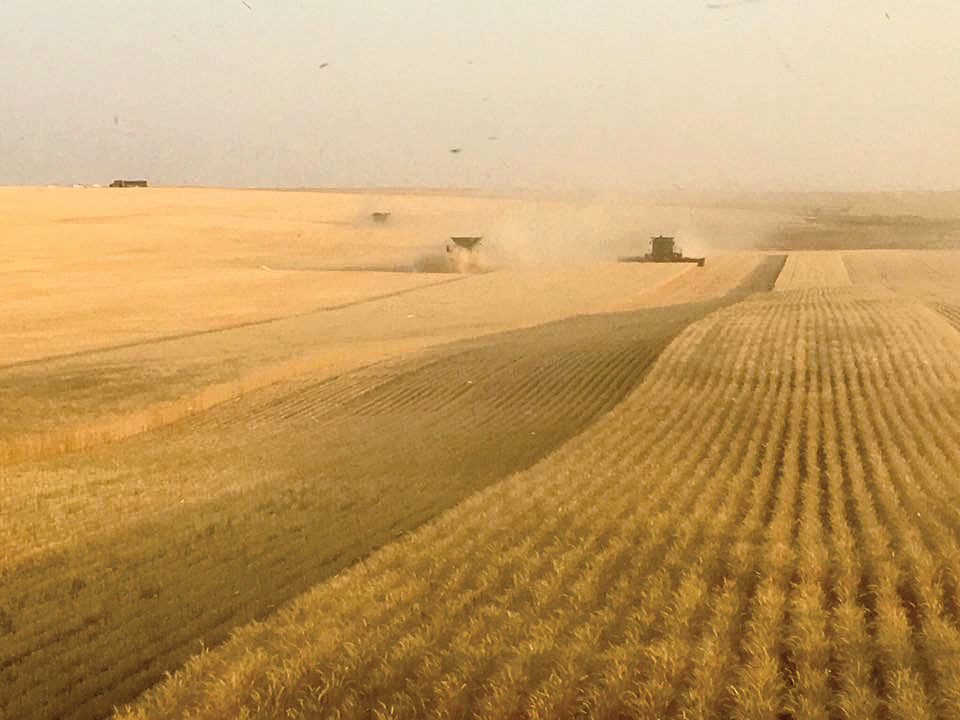
Scenic views greet Jeff Gregory as he combines wheat across the country. Photos courtesy of the Gregory family
Working Dawn ’til Dark
Typical days start at daylight in the field and end by 10 p.m. For her part, Shana handles paperwork and laundry, plus family breakfasts and lunches. For supper, she serves everyone in the field a tasty dish that she’s put together in a slow cooker. In her free time, she blogs about and posts photos of their travels on Facebook and an ag blog called HarvestHER.
Back-to-back cutting jobs can mean more than 30 days with no time off. Breaks and side trips may happen when a crop’s too green or heavy rains fall.
“As a family, we’ve visited Mount Rushmore in South Dakota and Pike’s Peak in Colorado,” Shana says.
Tight living quarters has its challenges, too. Imagine fitting clothes, belongings, office equipment and kitchen goods for four people into less than 400 square feet.
“I have to grocery shop every couple of days because there’s no extra room to store food,” Shana says.
Jeff laughs.
“Oh, yes, there’s nothing that will bring your family closer than living together in a 38-foot camper,” he says. “It’s an adventure every day.”
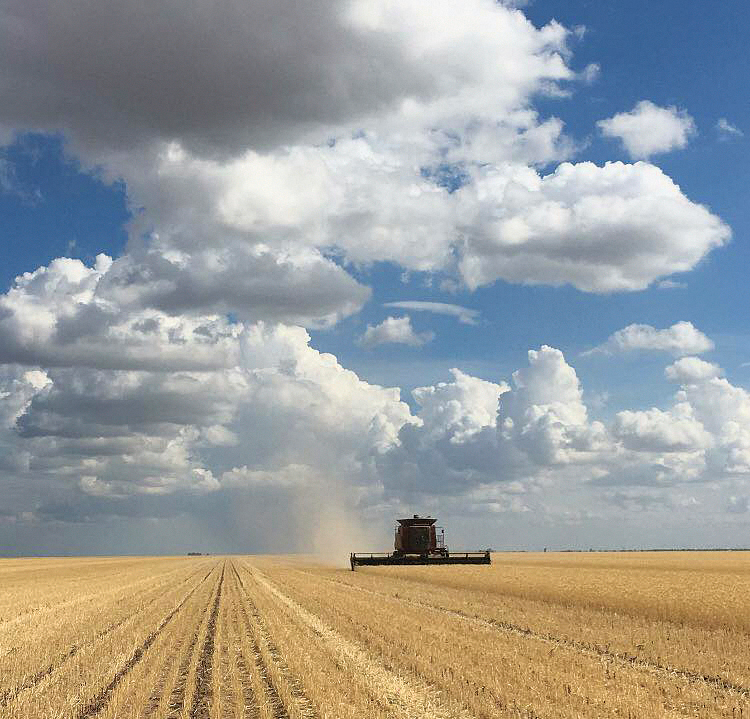
Scenic views greet Jeff Gregory as he combines wheat across the country. Photos courtesy of the Gregory family

